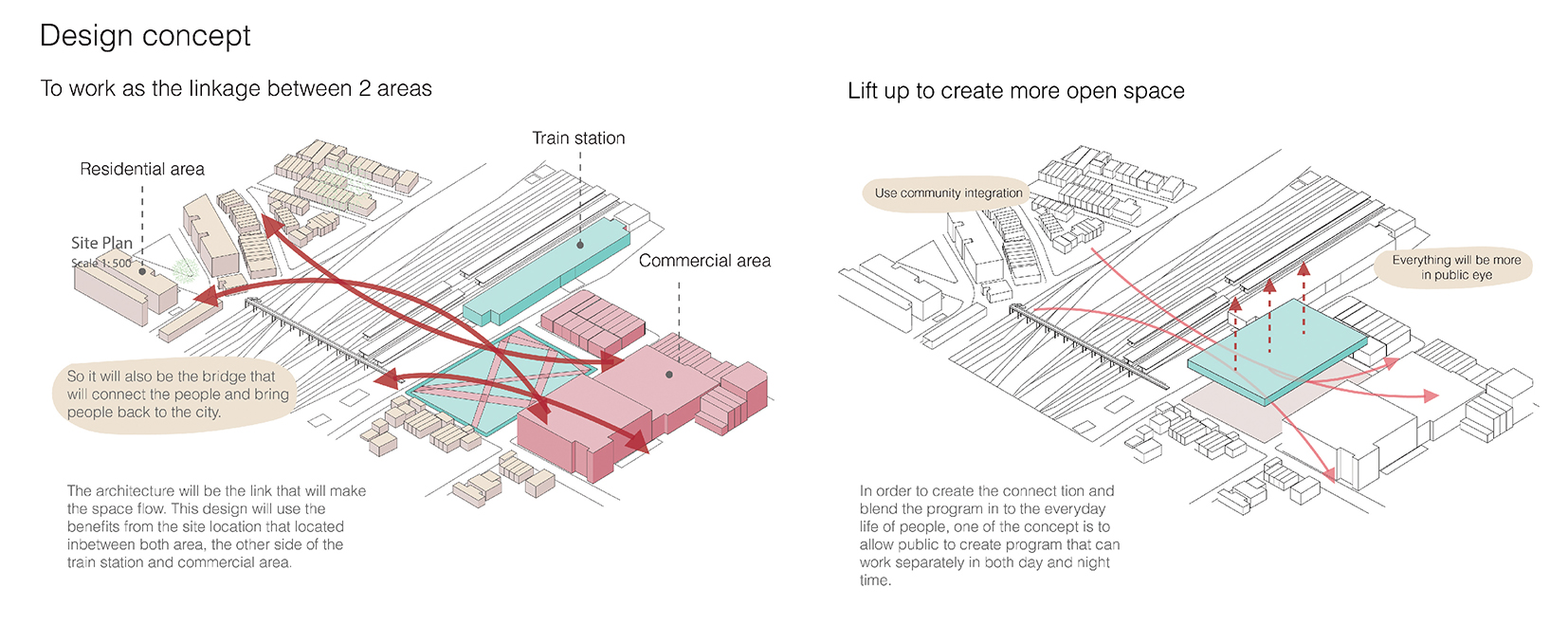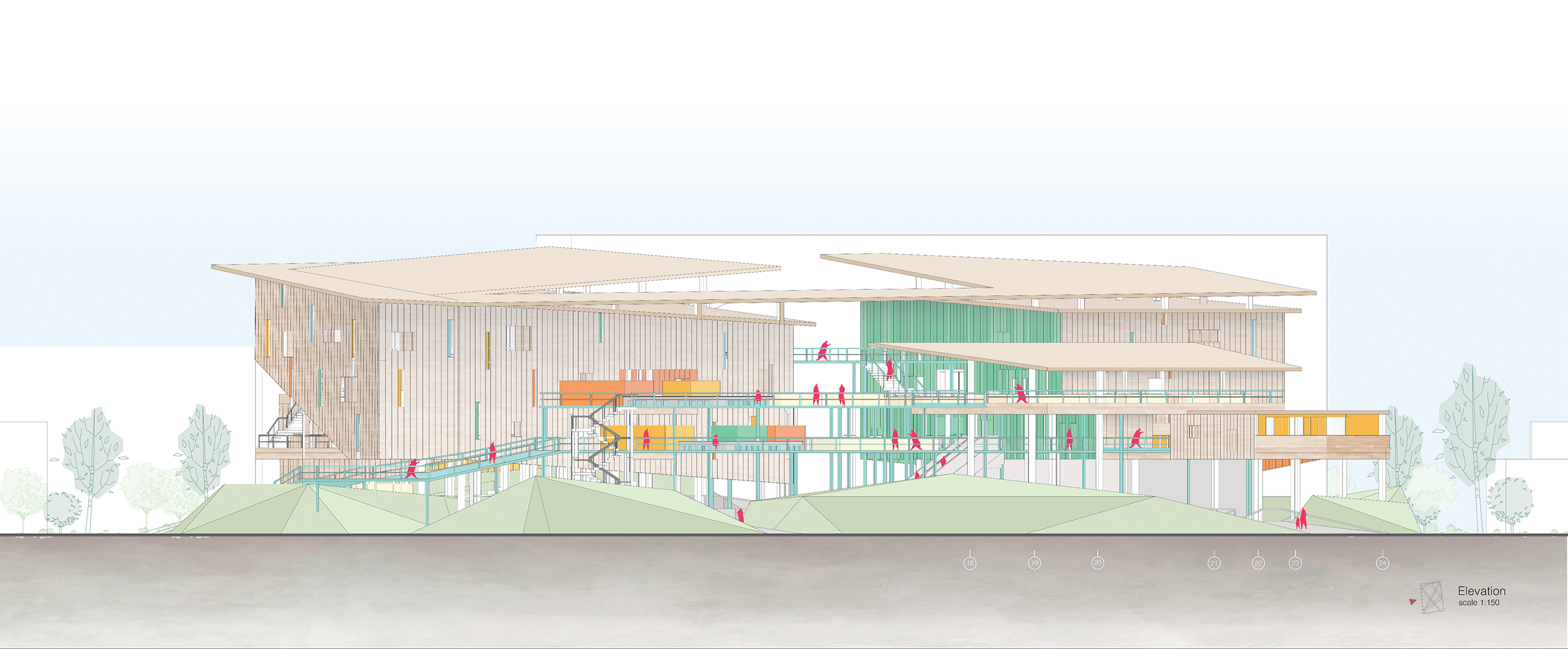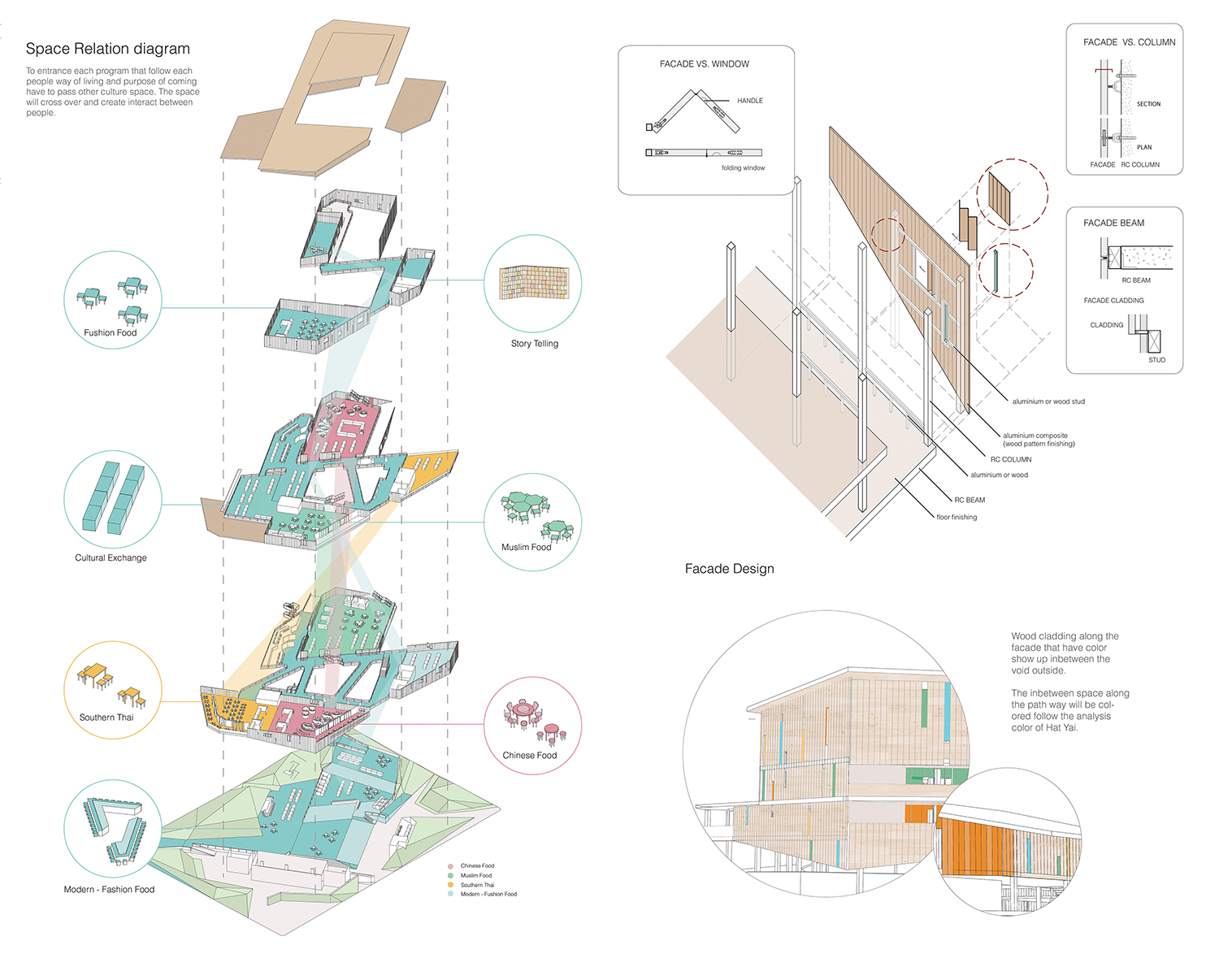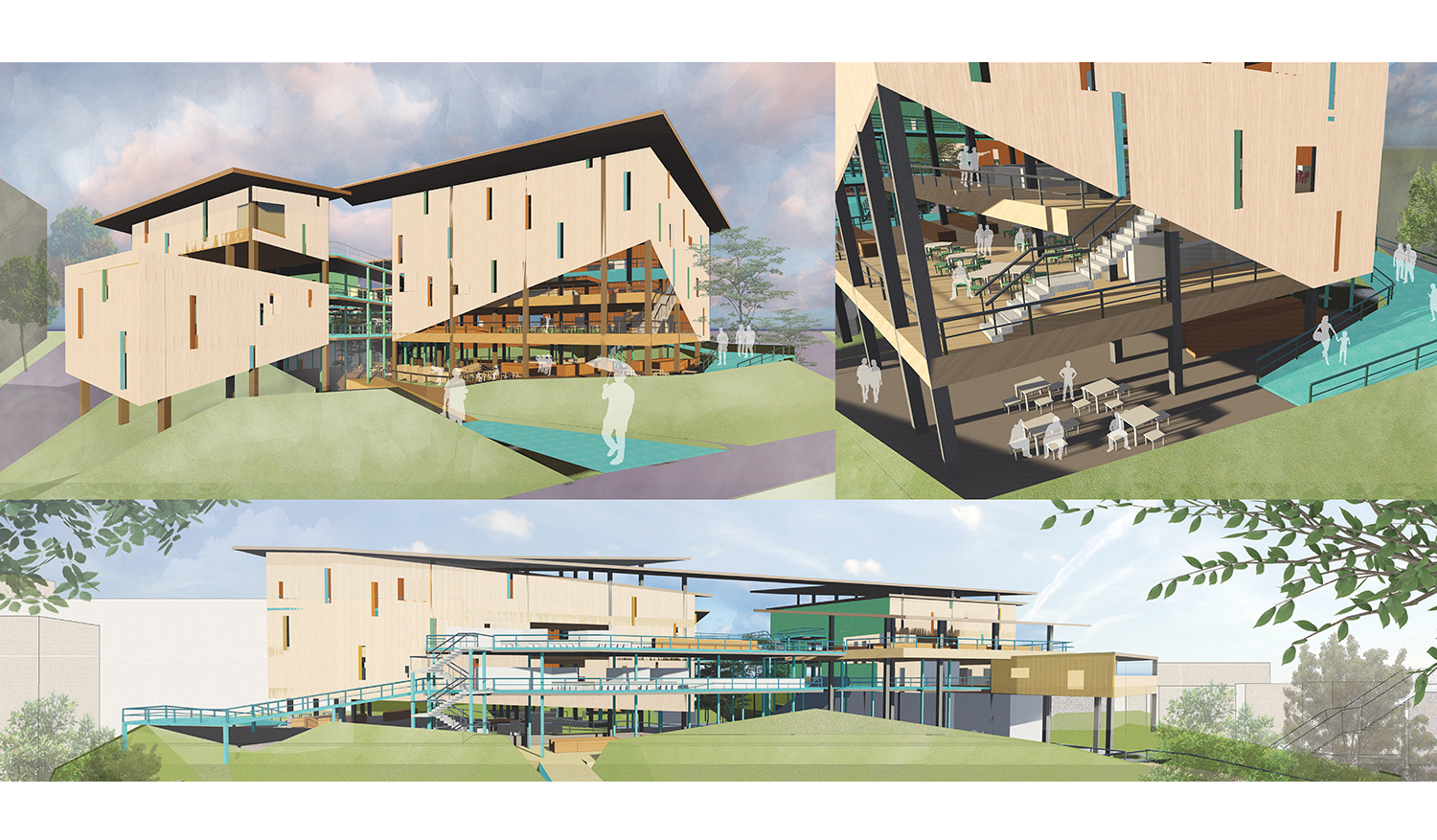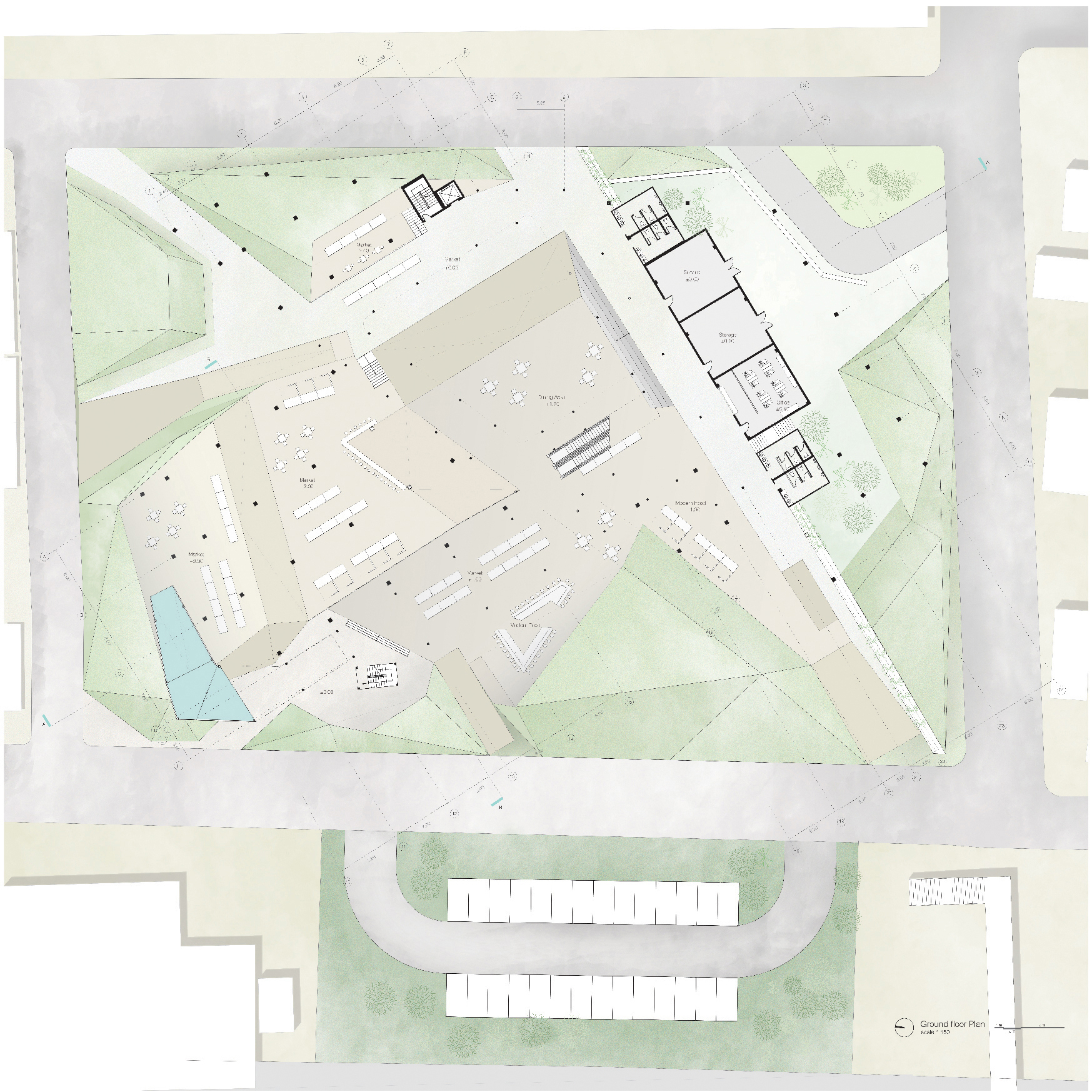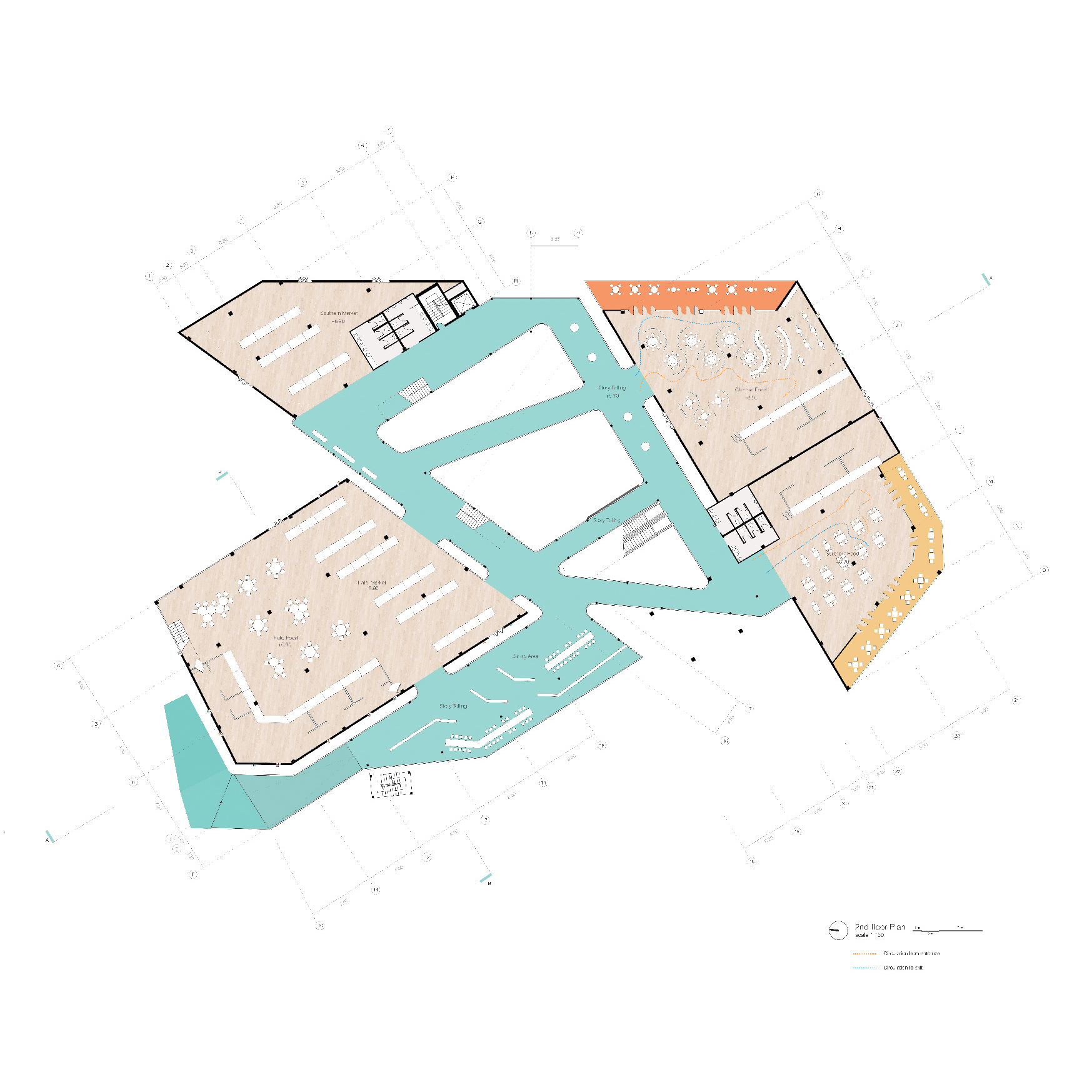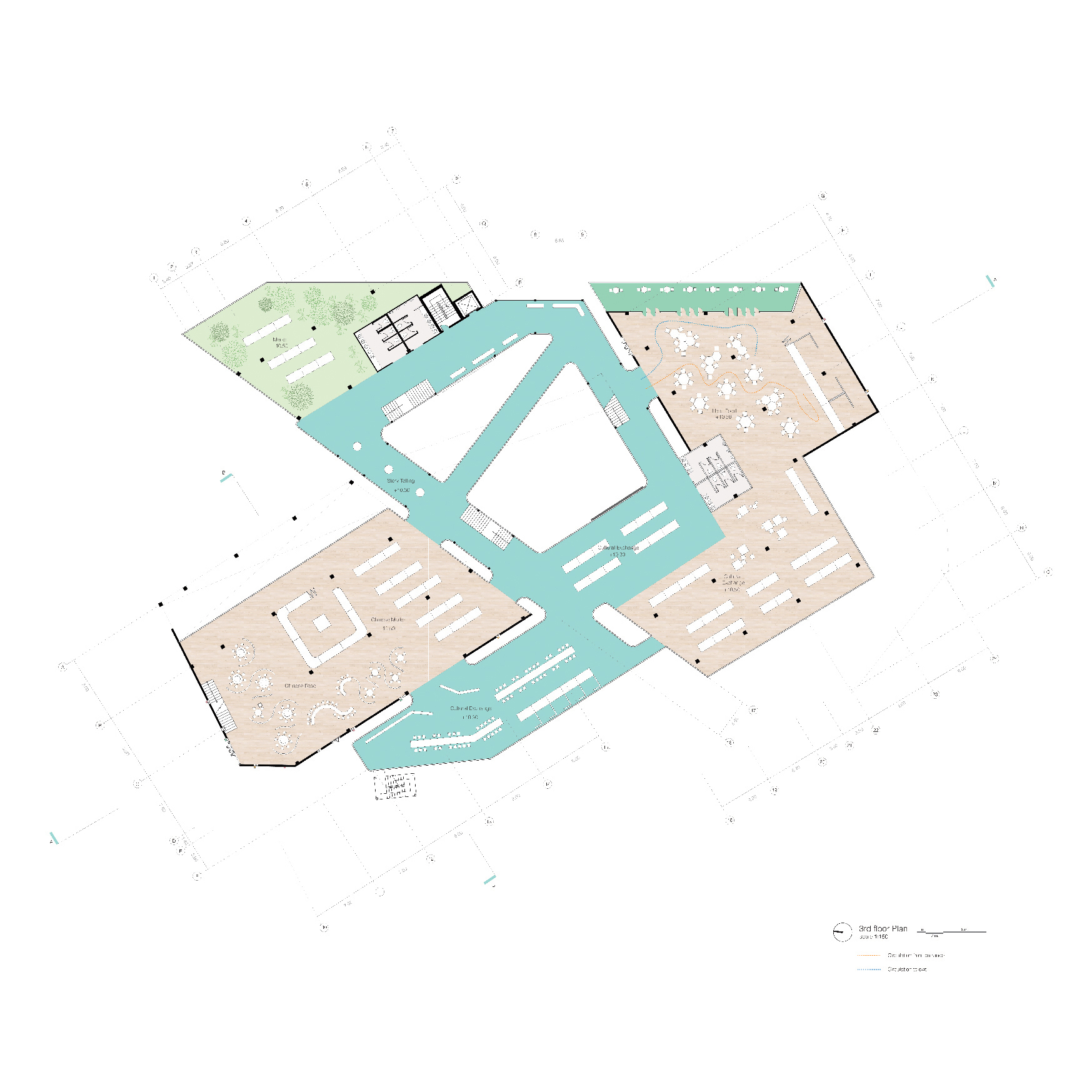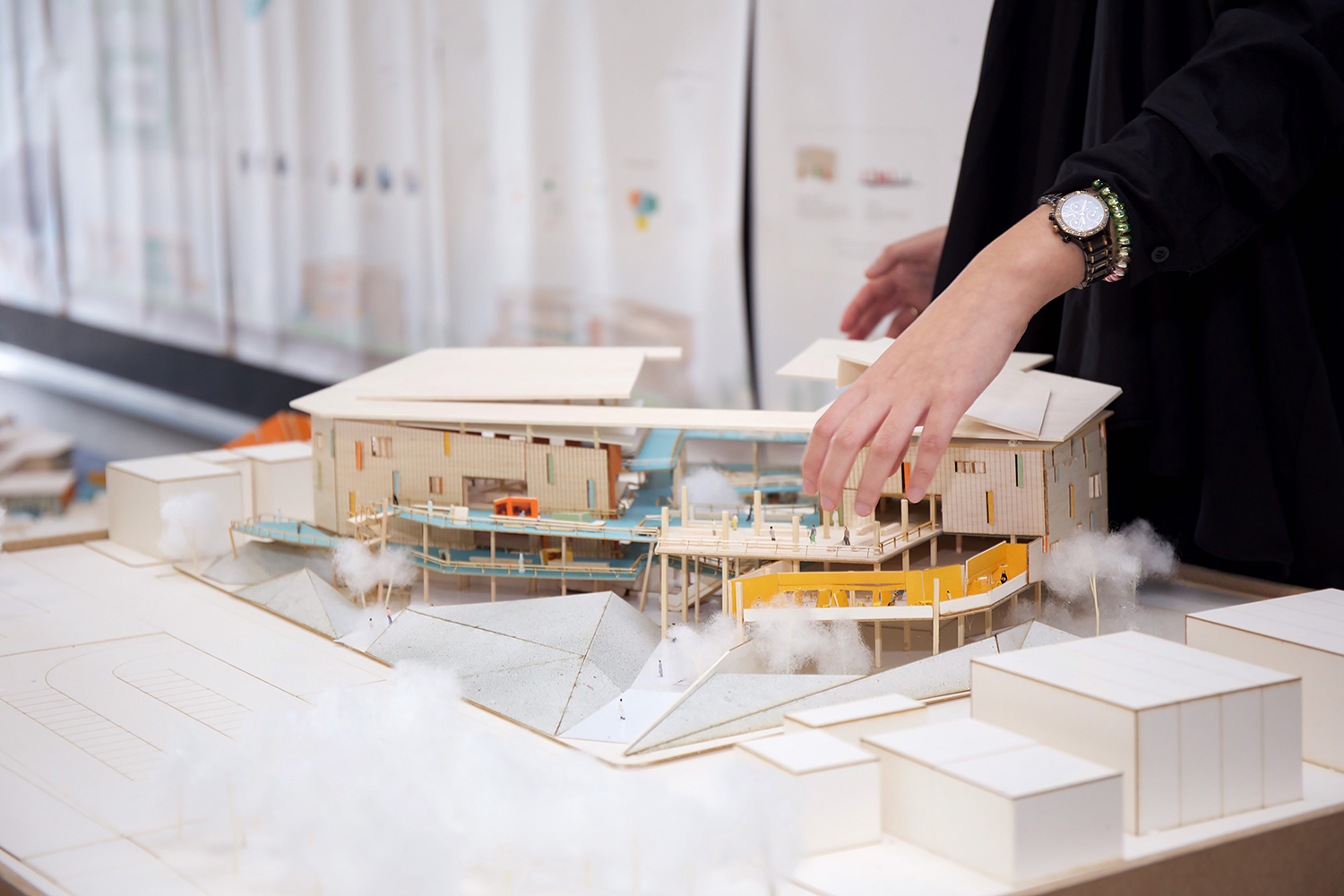LET’S FIND OUT THE IDEA BEHIND HAT YAI MULTICULTURAL BONDING, THE FINAL GRADUATION PROJECT BY SUTTAHATHAI NIYOMWAS WHO RECENTLY WON THE WORLDWIDE BEST BACHELOR’S THESIS PROJECT BY UNFUSE INTERNATIONAL ARCHITECTURE THESIS AWARD (UNIATA 2020)
TEXT: NAPAT CHARITBUTRA
IMAGE COURTESY OF SUTTAHATHAI NIYOMWAS
PORTRAIT: KETSIREE WONGWAN
There are many misconceptions people have when it comes to Hat Yai. First and foremost, Hat Yai isn’t a province. Second, it doesn’t have any seaside area and third, from the perspective of the later generation of those who are Hat Yai bred and born, Hat Yai is (perhaps) no longer the capital city of the south.
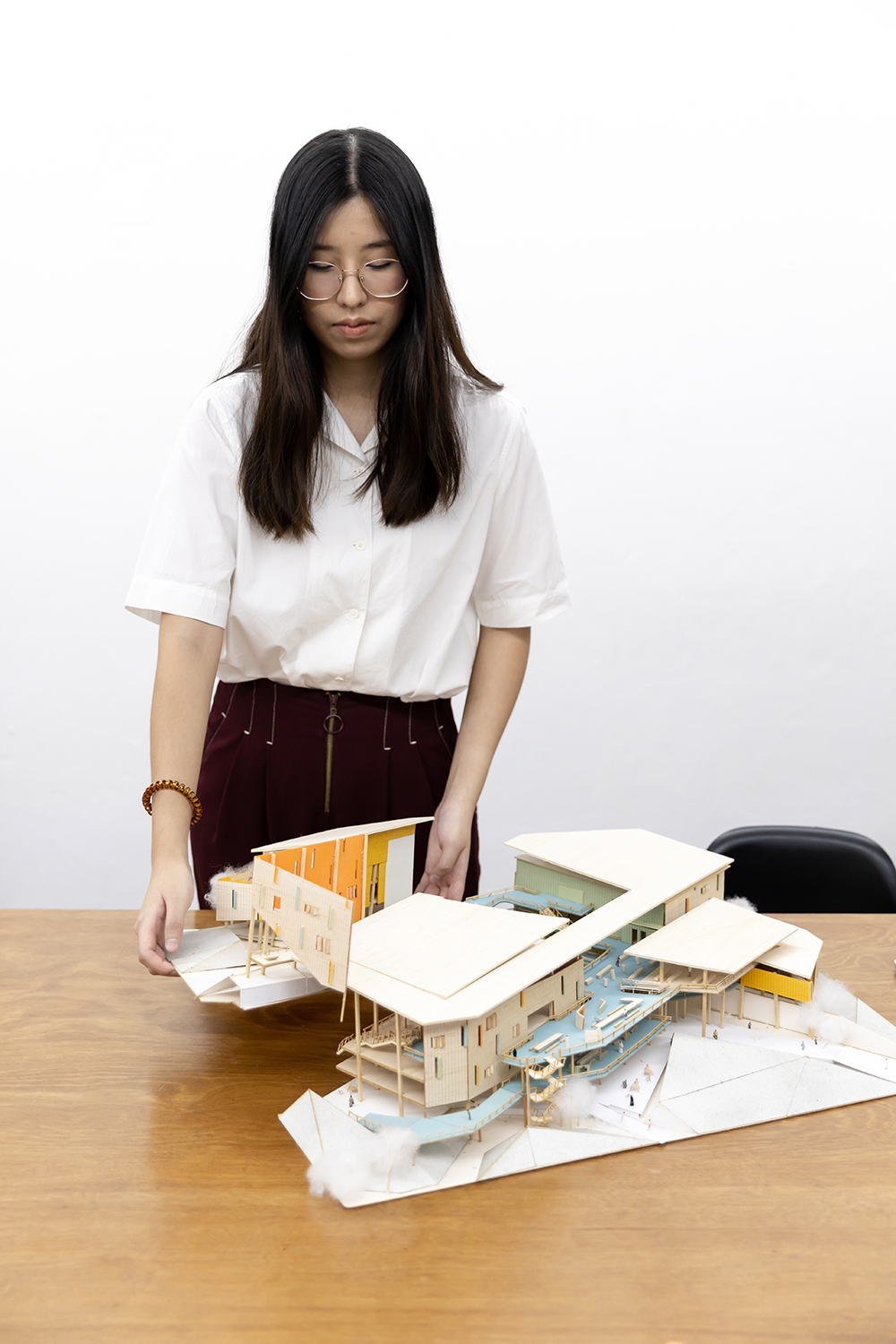
“The Kim Yong Market used to hold this position as Siam Square of Hat Yai. All the latest released products could be found there. The Green Tea Kit Kat that were extremely sought after in Bangkok could be found at Kim Yong and all the new shops chose Lee Gardens Plaza as the go-to place for their products.” Suttahathai Niyomwas, a freshly graduated architect from the Faculty of Architecture and Design, King Mongkut’s University of Technology Thonburi told art4d that the Hat Yai she was born and raised in is going through some changes. “You can say that it is gradually and unknowingly dying.”
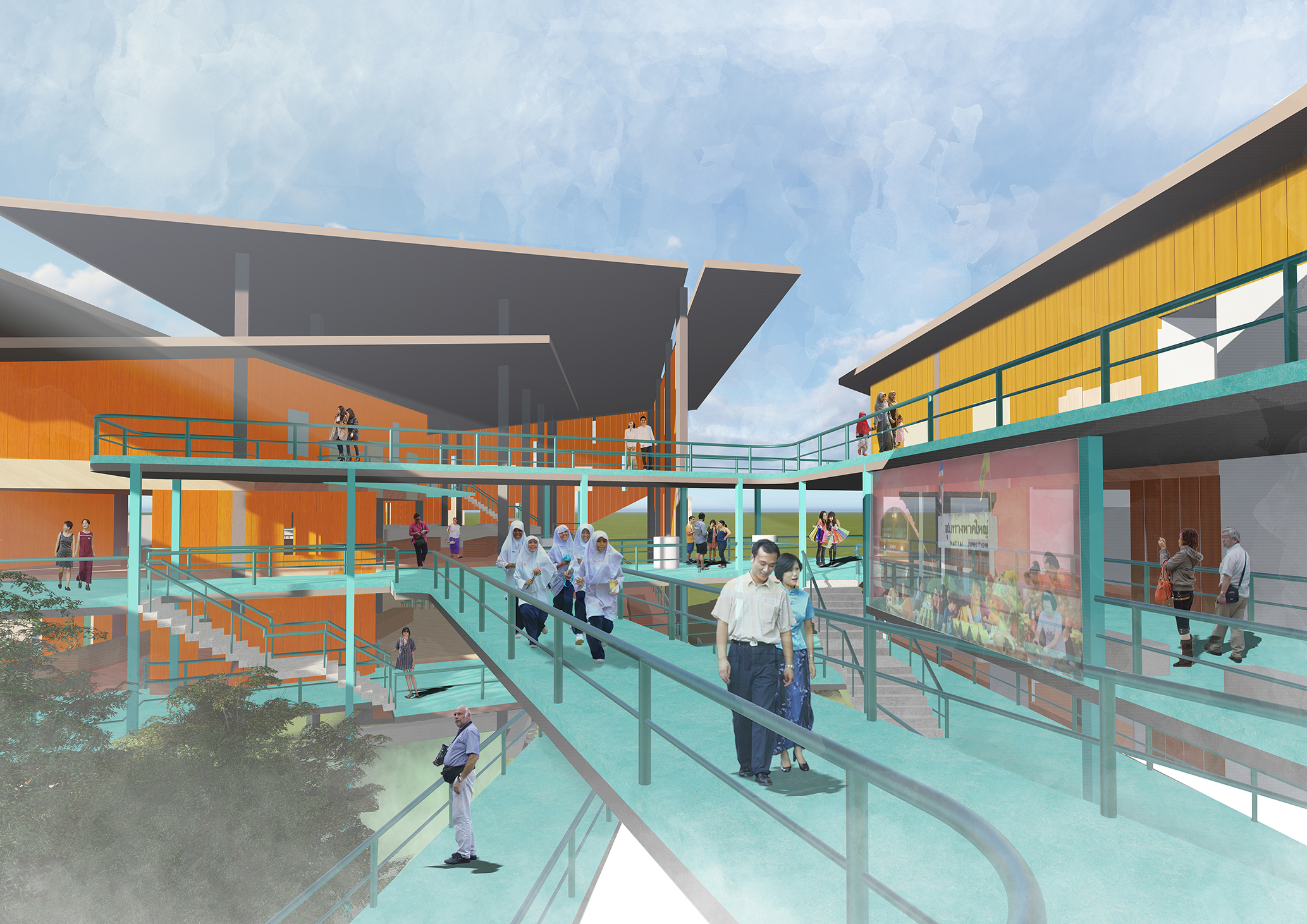
Just like most of Hat Yai’s younger generation, Niyomwas has somehow grown accustomed to the unrests that have been happening in the city. But the bombing incidents at Hat Yai International Airport and Lee Gardens Plaza in 2012 have brought an even more profound effect to the city. “It has ignited doubts and this irreconcilable mistrust and skepticism among the Buddhists, Thai Chinese and the Muslims. The city that was once glorious for its cultural diversity is now being consumed by blame, while the trading culture that used to be such a significant part of its identity is perishing. I became more aware of such facts when I was conducting a survey, asking 200 people about the city’s identity and many of them answered saying, Kim Yong Market. But when I asked further about their visit, they said that they barely go there.”
Everything led to the question of whether architecture can help turn the situation around. And it is with this very question that the idea behind Hat Yai Multicultural Bonding, her final graduation project and the Winner of Worldwide Best Bachelor’s Thesis Project by UnFUSE International Architecture Thesis Award (UnIATA 2020) was conceived.
Talking about making a change is easy; the important questions are how and with what?
“I live in a family of Chinese descent and I’ve heard rumors that paint this negative view on the Muslims and that has had tremendous effects on the city. It comes to the point where people talk about not going to buy from shops owned by people from a different race. But Chinese Thais who live in Hat Yai find no trouble queuing to buy the famous Hat Yai fried chicken.” Niyomwas told art4d that food is the only thing that’s barely affected racial boundaries and she wants people to see this common ground or the cross culture in the dishes people eat on a daily basis and ultimately develop new perspectives that they can have towards each other.
The initial idea Niyomwas came up with was to establish a museum that would serve as a learning center but the idea changed pretty quickly knowing for certain that the project’s target group would prefer to go shopping rather than going to a museum. From the case study such as Markethal by MVRDV and Singapore’s Hawker Centre, as well as the study of the revitalization of cities such as Hội An in Vietnam, the concept of the built structure was realized as a melting pot with a bunch of interesting elements in it. A community mall is the closest term that can be used to explain the project—a very local and vernacular shopping mall.
The project is sited between Kim Yong Market and Hat Yai Train station. The architecture is designed to serve as a large-scale circulation that connects people in the residential areas located on both sides of the train station, offering them easy access to the market. A zone called ‘cultural exchange’ is put on the ground floor where the flow of people is greater. By taking sharing market approach, half of the functional space on this floor sells products from Kim Yong Market while the other half features new products. The second floor is a food hall that puts together both old and new local restaurants. The third floor accommodates more restaurants and a space for workshop activities. Exhibition boards can be found installed throughout the program for visitors to look at as they browse the shopping mall.


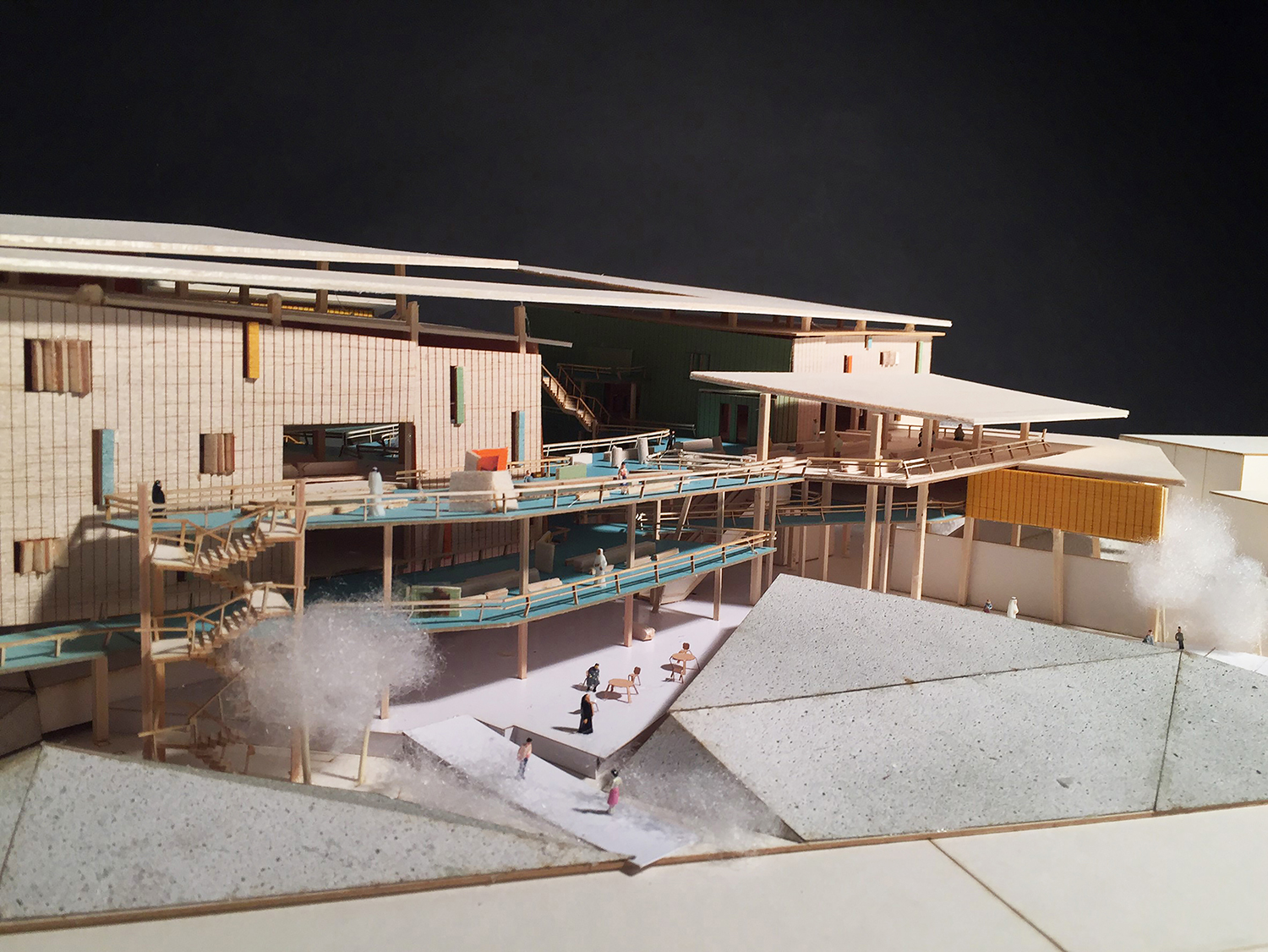

In addition to the use of the lucky colors according to different cultural beliefs with different parts of the project, Niyomwas also integrates cultural identities of the three local cultures (the Thai Chinese, Muslims and Buddhists) to the designs of restaurant layouts, which are derived from the varying traditions of each cultural community. In addition to food, dining has been an integral yet overlooked part of a cultural identity. If we were to think about it, in most local Thai restaurants, patrons usually make their orders before finding a seat whereas in Chinese restaurants, customers are usually seated before ordering the food. Meanwhile, in Muslim restaurants, one would usually come across at least one long table with the number of seats enough to accommodate a large family. All these details have been used with the design of the layouts, which connect with the restaurants’ cultural backgrounds. “Everything isn’t thrown into one place. The distinction is made obvious so that people are instantly aware that this is a Muslim restaurant, this is Chinese and this is a Thai restaurant. It also creates interesting diversity to the program as well.”
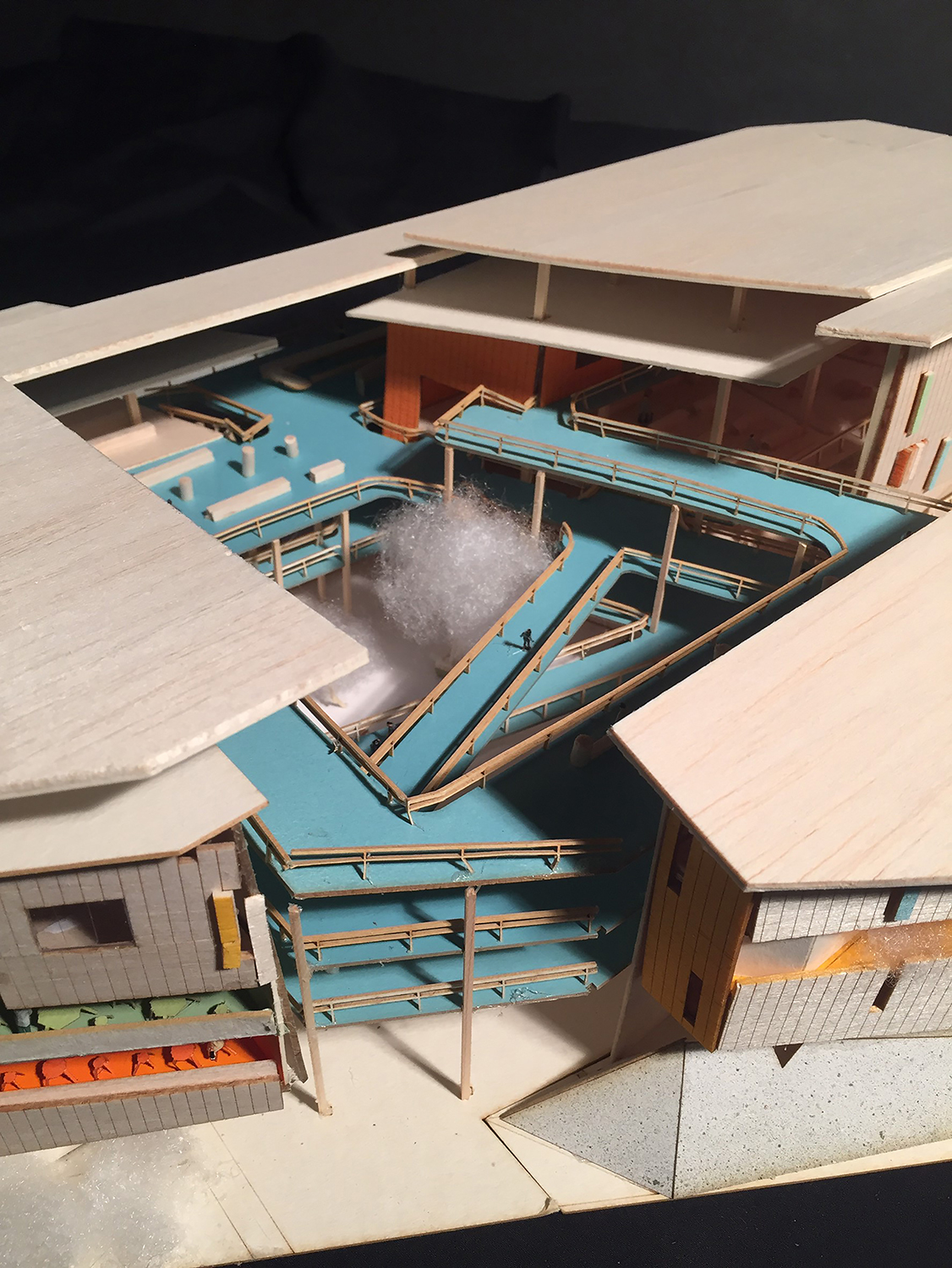
“Despite the unrest, people go out and buy food anyway because that’s what the city is famous for. I think it’s the multicultural characteristics of it that makes food special and different.” When discussing the design in further details, we sensed that Niyomwas put a lot of thoughts in curating Hat Yai’s local food into the program. On the third floor of the building, she includes a space selling the more contemporary food such as Shabu and bubble milk tea as an alternative. But looking at the big picture of the project, we find that her design is realized to cater to people’s shopping behaviors throughout the day as well as at night. “I didn’t design the project to compete with Kim Yong Market. But we have to admit that it is now time for everyone to adjust to new changes because the majority of users from now on will be the young generation and I want the architecture to be an example of how embracing changes and new possibilities can bring livelihood back to the area, and hopefully the people who have lived around Kim Yong Market all their lives can allow new doors to be opened and new changes to be made. I want this to be a positive effect for everyone who lives in Hat Yai.”
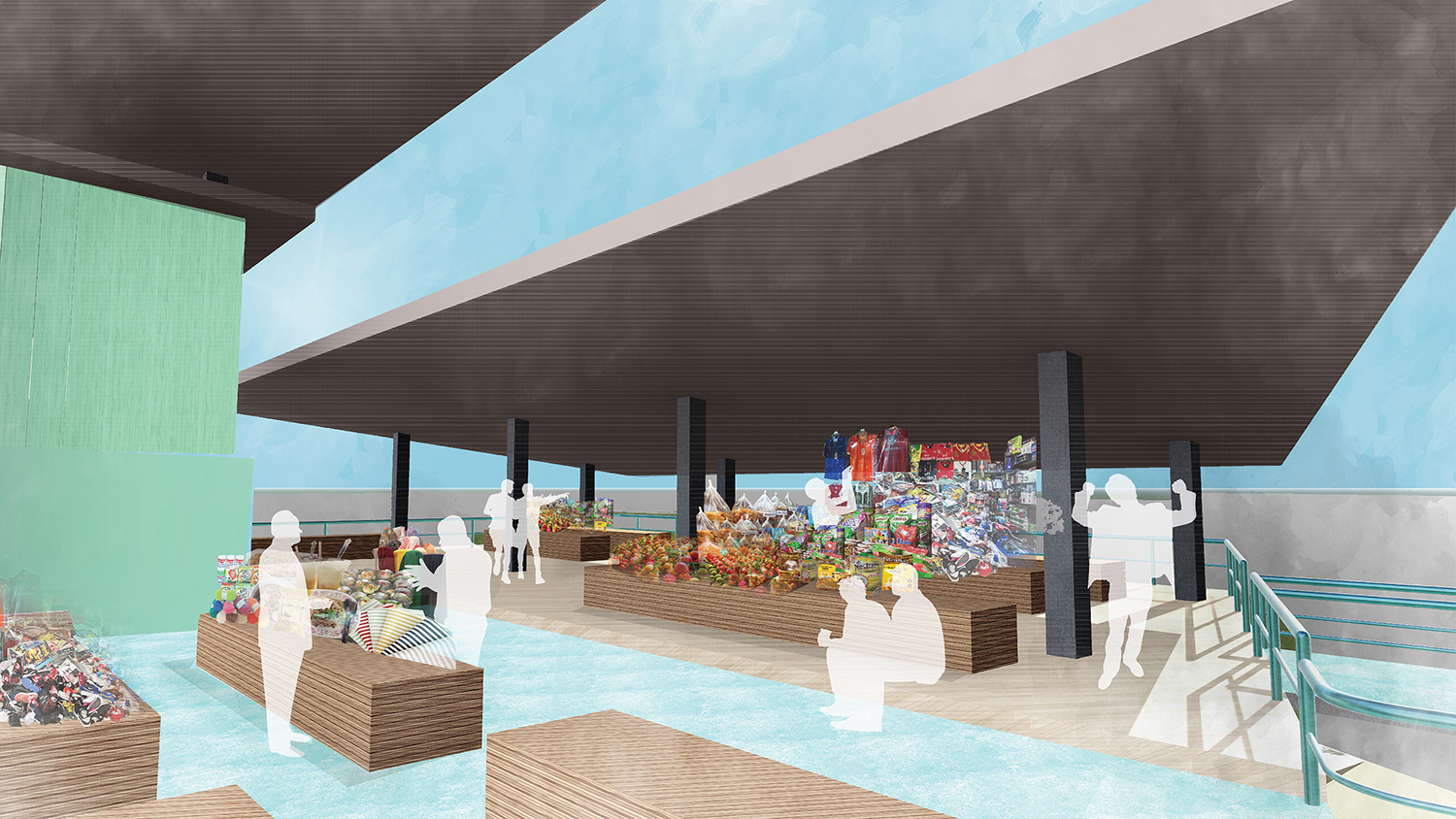
The landscape is used to create a sense of security in the project. The green space surrounding the functional program is designed into a slope that envelops the area underneath the elevated floor, functioning similarly to a bunker despite not looking so much like one. The elastic walls or double-layered concrete walls are used as a supporting steel structure hidden under the slope, rendering a friendly, welcoming environment. Such composition also helps determine the entrance and the exit, which is highly useful for the screening system that is being implemented in public spaces nationwide.
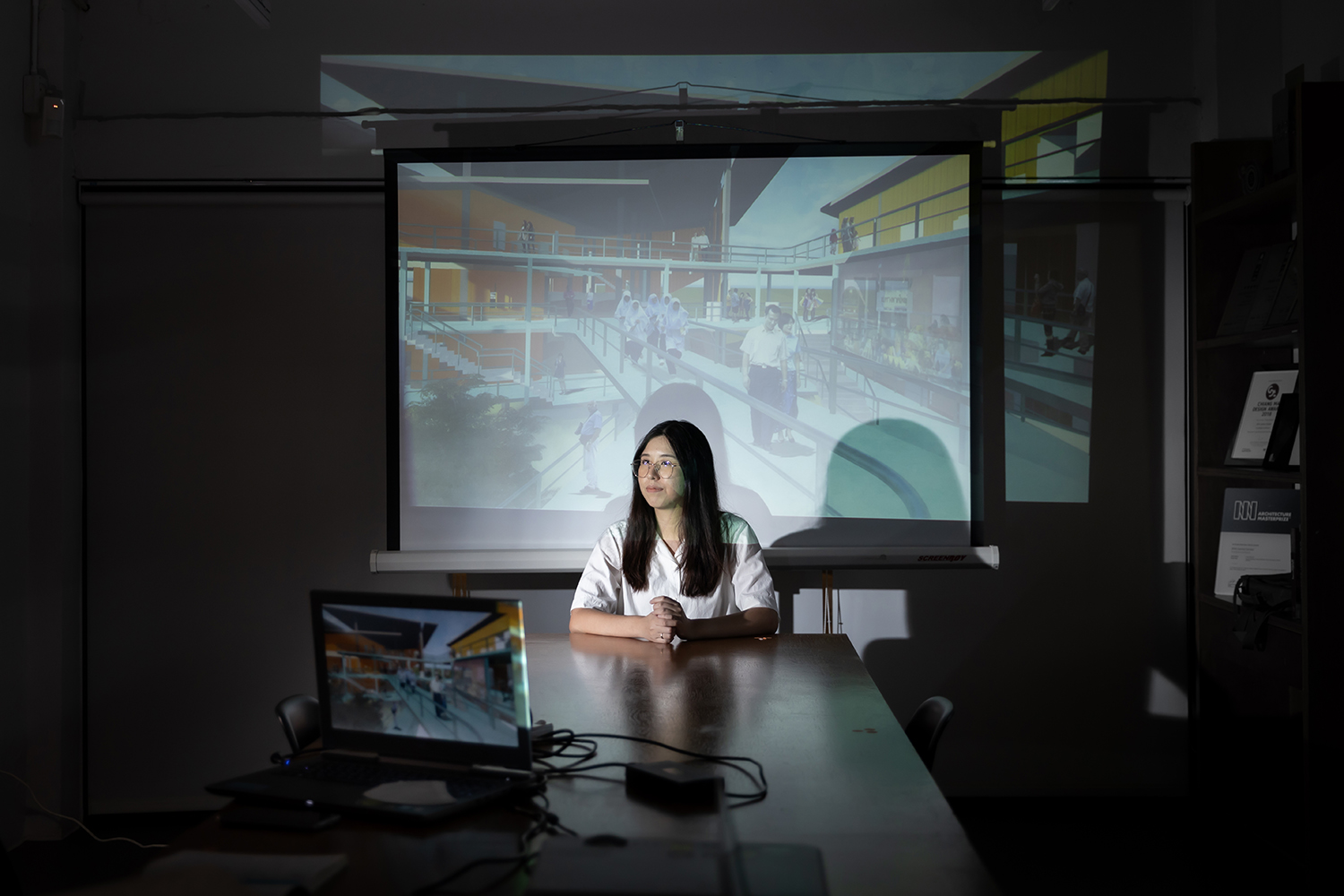
Just like other provinces in Thailand, Hat Yai is facing the problem where its young residents leave their home to pursue their education and career opportunities in big cities such as Bangkok. Niyomwas is one of them. With her current job as an architect at Somdoon Architects, Niyomwas keeps her options open and when the right time comes, she will return and bring greater changes to her hometown. And while her award-winning Hat Yai Multicultural Bonding project is just an idea, we feel that a way has been paved for her to return to the city she calls home, for at the end of the day, the most important beginning of urban development is the belief that our home and our country can become a better place.
issuu.com/suttahathai/docs/portfolio_suttahathai_2019
e-mail: suttahathai@gmail.com


